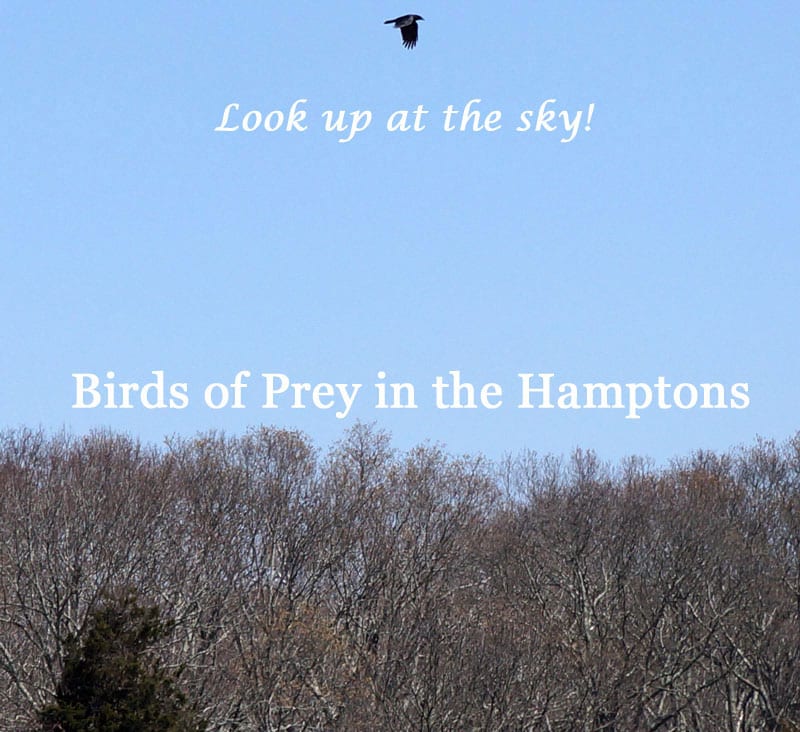 Look up at the sky! I told my kids. Another hawk overhead. Living in the Hamptons we often stared up at the sky or searched telephone posts and wires looking for birds of prey.
Look up at the sky! I told my kids. Another hawk overhead. Living in the Hamptons we often stared up at the sky or searched telephone posts and wires looking for birds of prey.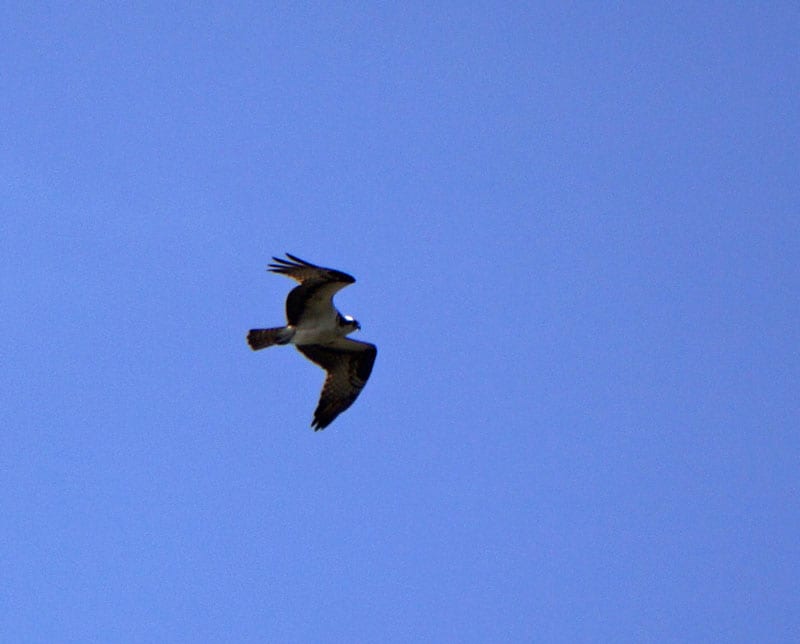
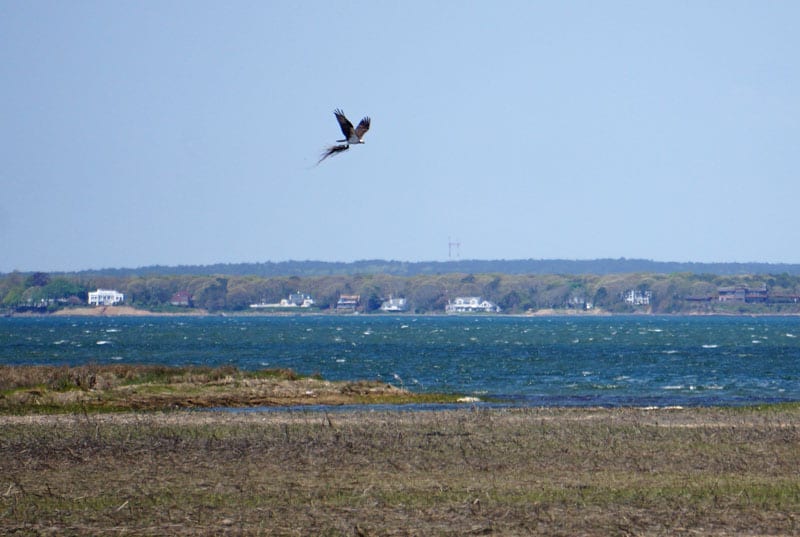
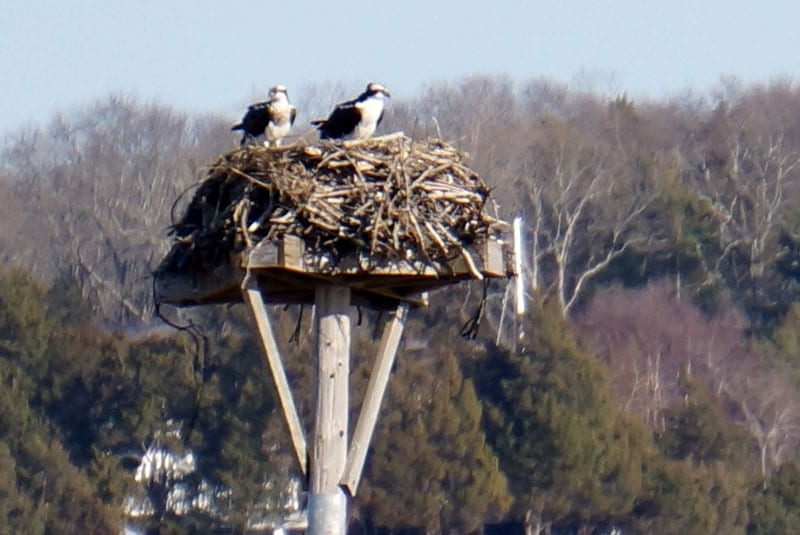
From the Spring onwards my children and I caught sight of Ospreys sitting on their high nest poles scanning the water nearby. I’ve even seen one swoop down and catch a fish and then return to its nest holding it aerodynamically between its talons in flight. We’ve watched red-tailed hawks soar and circle above fields. We’ve observed birds of prey in local wildlife rescue centers and refuges that have been injured and no longer would survive by themselves in the wild.
My kids and I together started learning about birds of prey – also known as raptors – thanks to living in an area where these magnificent birds still hunt and live. Or pass through during migratory periods.
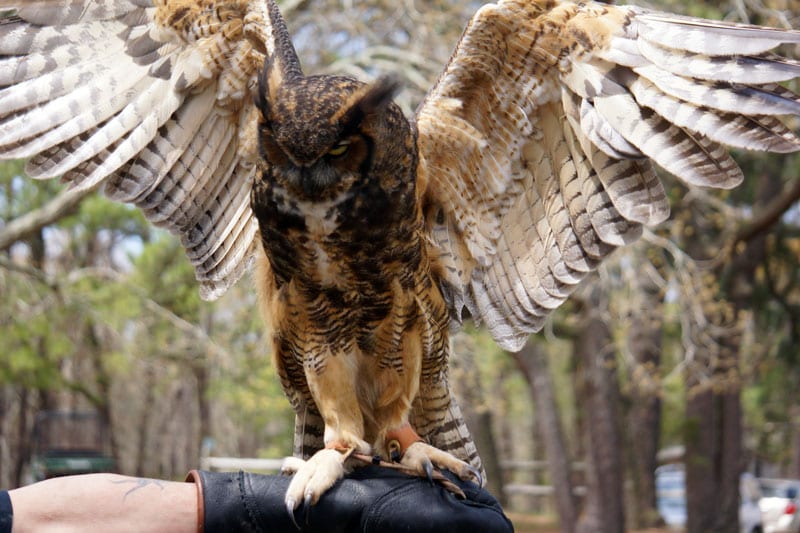 Together we’ve discovered that raptors are known for their excellent eyesight, curved beaks and powerful talons. You might think of the Great Horned Owl as wise and calm but it’s considered the top and strongest hunter out of all the birds of prey. Crows are terrified of the Great Horned Owl so if you hear a murder of crows all screeching and flying in a frenzy one early morning – then it’s probably because they’ve spotted their worst enemy.
Together we’ve discovered that raptors are known for their excellent eyesight, curved beaks and powerful talons. You might think of the Great Horned Owl as wise and calm but it’s considered the top and strongest hunter out of all the birds of prey. Crows are terrified of the Great Horned Owl so if you hear a murder of crows all screeching and flying in a frenzy one early morning – then it’s probably because they’ve spotted their worst enemy.
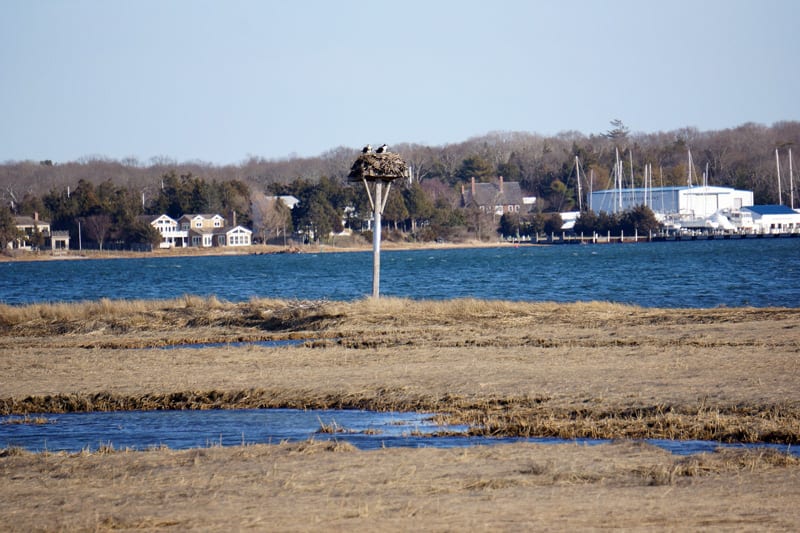 It’s only because my kids and I have been exploring the natural world in Long Island that we’ve marveled at the wildlife in the sky, trees and water around us. When we’re driving in the Hamptons, my kids, unlike me, are not interested in gazing at the mansions that we pass. When we pass open fields I tell them to look out for hawks. When we visit a nature reserve in wetlands or by a water inlet or pond I get them to spot the Osprey nest poles.
It’s only because my kids and I have been exploring the natural world in Long Island that we’ve marveled at the wildlife in the sky, trees and water around us. When we’re driving in the Hamptons, my kids, unlike me, are not interested in gazing at the mansions that we pass. When we pass open fields I tell them to look out for hawks. When we visit a nature reserve in wetlands or by a water inlet or pond I get them to spot the Osprey nest poles.
We want to go back to the amazing Walking Dunes – one of my kids’ favourite places – because apparently it’s a great vantage point for scanning the skyline for raptors hunting. Especially in September and October during the Fall migration. The natural world of the Hamptons is filled with birds of prey for kids to discover outside.
Kid-friendly guide to birds of prey in the Hamptons
I’ve made a guide on some of the birds of prey in the Hamptons with some basic facts for kids.
(I’ve listed resources by experts further below)
RED-TAILED HAWK
- One of the most common hawks in the USA and in the Hamptons.
- Wingspan 38 to 43 inches
- Eat mice, birds, snakes, insects, squirrels, rabbits and other small mammals
- Look for them soaring and circling over open fields or perched on telephone posts and trees by an open field.
- Raspy, shrill cry
- Builds stick nests usually near the crowns of trees
We’ve regularly spotted them circling in the sky above the fields at SOFO (South Fork Natural History Museum and Nature Center).
OSPREY
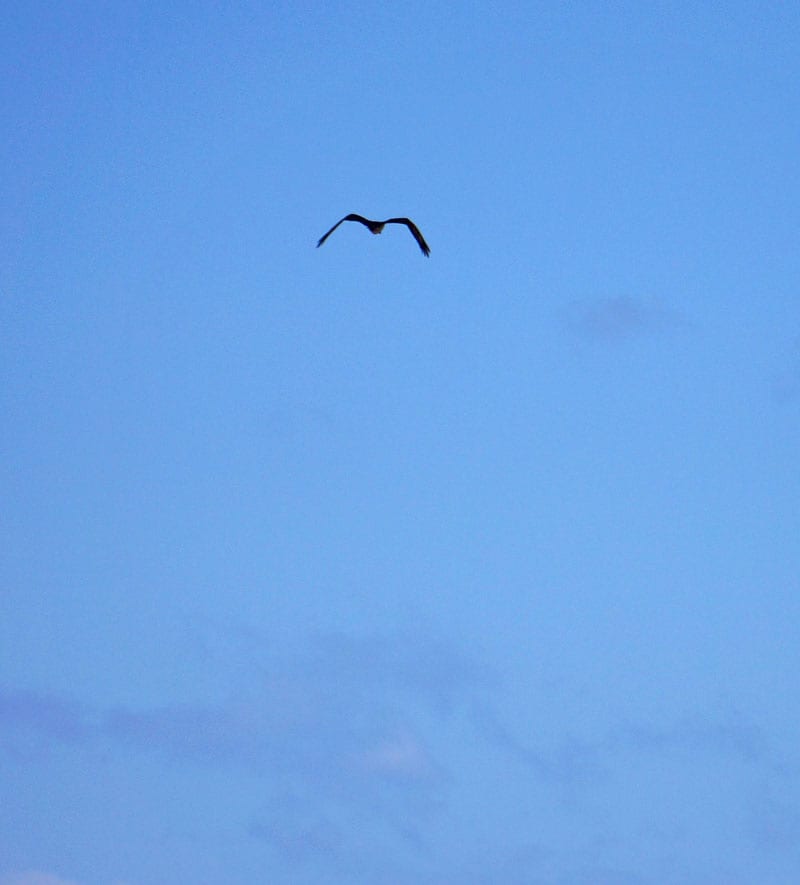
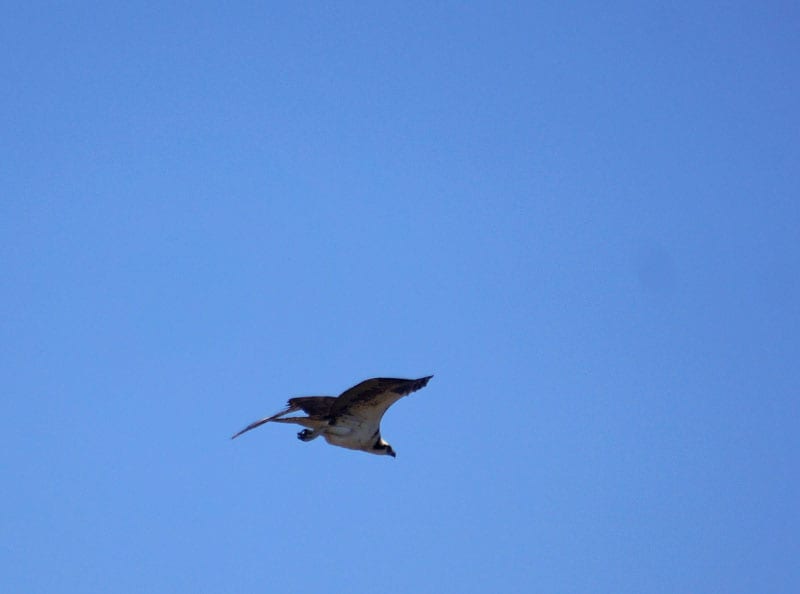
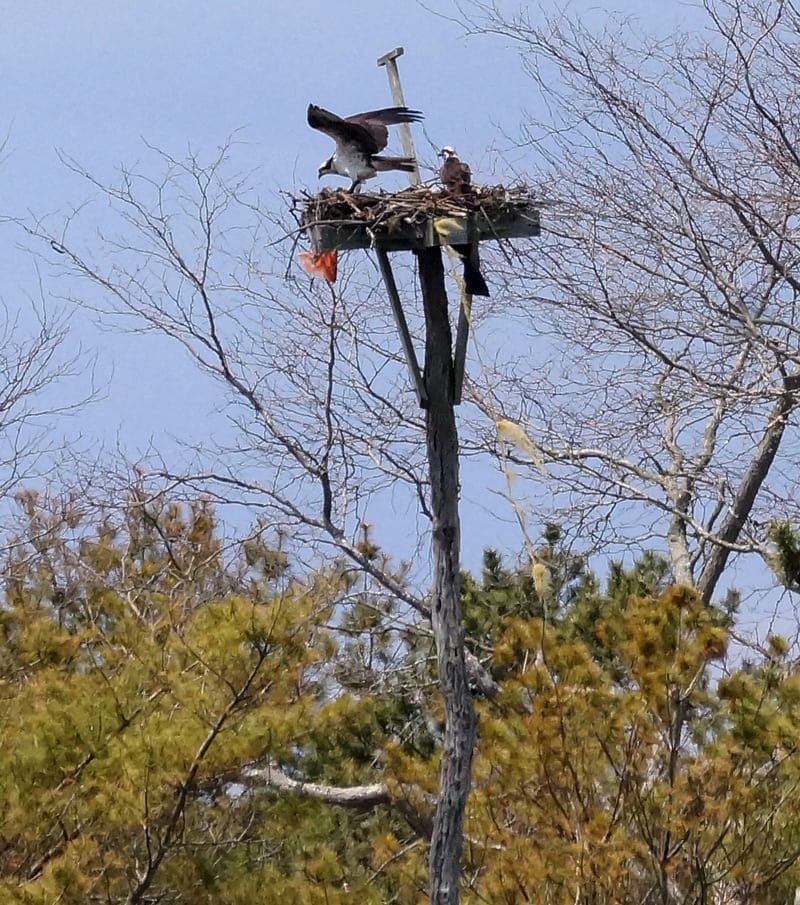
- Common in the Hamptons from Spring to Fall. Migrate to Central and South America in the Winter.
- Wingspan 5 to 6 feet which forms an M-shape often in flight.
- Eat fish which they catch with their claws.
- Look out for specially constructed nest platforms near shallow bodies of water in the Hamptons. Osprey nests are often so large they can weigh several hundred pounds.
- Once they lay an egg in a nest they return to the same location every year with the same mate.
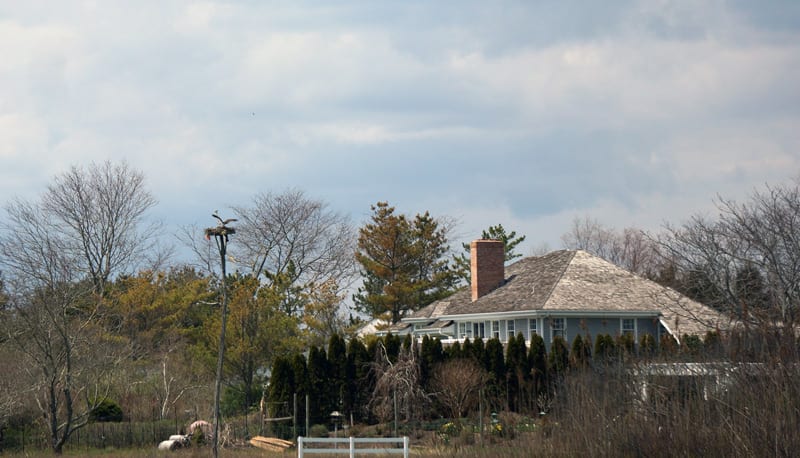 We’ve spotted Osprey nest platforms on Sammy’s Reserve, Elizabeth A. Morton National Wildlife Refuge, SOFO, Munn Point and in a water inlet by Cobb Road in Watermill. The last location (above) is an example of how Ospreys have adapted to developed areas.
We’ve spotted Osprey nest platforms on Sammy’s Reserve, Elizabeth A. Morton National Wildlife Refuge, SOFO, Munn Point and in a water inlet by Cobb Road in Watermill. The last location (above) is an example of how Ospreys have adapted to developed areas.
There are Osprey nest poles on many other nature reserves in the Hamptons. Osprey numbers are increasing again after DDT was banned.
AMERICAN KESTREL

- Small and colorful falcon which hunt insects and small prey
- Wingspan up to 2 feet
- Look out for them on telephone wires by open fields and roadsides
- Nest in cavities such as hollows in trees
My picture was taken of an injured Kestrel taken care of in New York’s Adirondacks Wild Center. The Audubon Society has been installing nesting boxes throughout the state including Long Island after numbers started dramatically dwindling.
TURKEY VULTURE
- Featherless red head that looks like a turkey with dark brown body. In flight they look two-toned – almost black with a paler grey – and often rock side to side.
- Wingspan 5 to 6 ft
- Eats carrion which it finds by smell and sight
There are occasional sightings of Turkey Vultures in the Spring and Winter. (My picture was taken on a visit we made to the Everglades in Florida where it was perched high on a dead branch above the treeline.)
BALD EAGLE
- White head, curved yellow bill and brown-to-black body. Young bald eagles remain dark until around 5 years old when they get the distinctive white markings.
- Wingspan 6 to 8 ft
- Eat mainly fish but will also scavenge carrion or snare small mammals, gulls or waterfowl
- National bird symbol of the USA since 1782
Soon you might glimpse an eagle if you’re lucky as they have started nesting again in Long Island. Adult Bald Eagles have three nesting sites near the Hamptons on Long Island:
- Gardiner’s Island ( off the north shore of the South Fork)
- Wertheim National Wildlife Refuge in Shirley (westwards of the Hamptons)
- Mashomac Preserve on Shelter Island (between the South and North Forks).
Once Bald Eagles select a nesting location they tend to use it for the rest of their lives.
My images are of an injured bald eagle who lives on Grandfather Mountain in North Carolina. If you want to see one locally, there is an injured bald eagle that now lives in the Quogue Wild Refuge near Hampton Bays which I’ve written about in my post on nature’s caretakers.
GREAT HORNED OWL
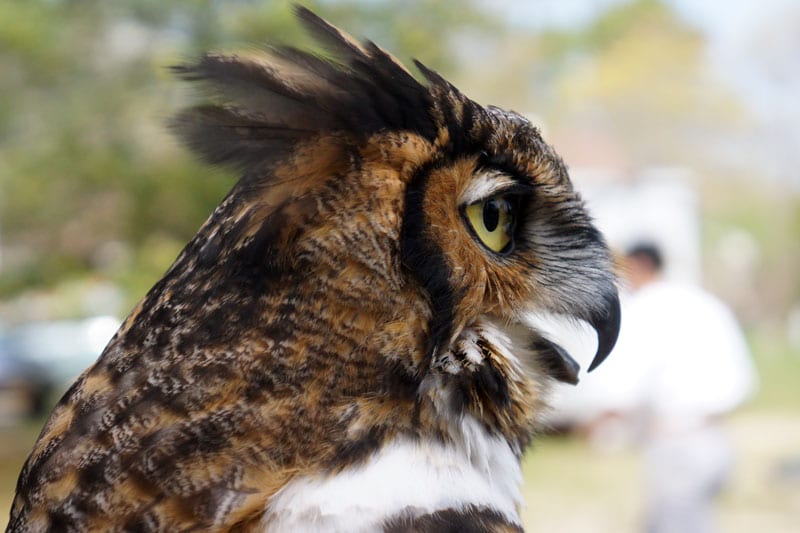
- A year round resident in the Hamptons as they are not migratory and are at home in any habitat.
- Have tufted feathers on their head that look like ‘horns’ and large yellow eyes.
- Nocturnal predators that will eat a huge diversity of creatures including mammals, birds, frogs and even other birds of prey. They kill prey with their powerful talons and can carry in flight mammals much heavier than themselves.
- Wingspan 3.3 to 4.8 ft
- Their eyes don’t move in their sockets but they can turn their heads 180 degrees to look around them.
- They make a recognizable deep repeating hoo-hoo sound.
SOFO organizes Full Moon excursions for actual sightings of an Eastern Screeched Owl or even a Great Horned Owl. We haven’t been on one of these outings as only children 12 and over can accompany adults.
My images are of a Great Horned Owl rescued when it was two days old. She had broken both of her wings as well as pelvis. As she can’t fly properly she can’t be released into the wild. Meep is now a wildlife ambassador in educational programs by the Wildlife Rescue Center of the Hamptons.
EASTERN SCREECH OWL
- The Eastern-Screech Owl is common in the Hamptons and also a year round resident.
- Small with only a 20 inch wingspan and prominent ear tufts.
- Nest in tree cavities, niches in buildings and sometimes nest boxes.
- As they’re grey or reddish brown they easily camouflage themselves in tree crannies.
- Nocturnal hunters mainly of small mammals and birds.
Their trilling call can be heard at night in woods. SOFO organizes walks in woods on Full Moon nights to see and hear them.
My images are of an injured adult Eastern Screech Owl called Martino which now resides at the Wildlife Rescue Center in the Hamptons. He weighs only weighs 6 ounces (160 grams)!
OTHER BIRDS OF PREY
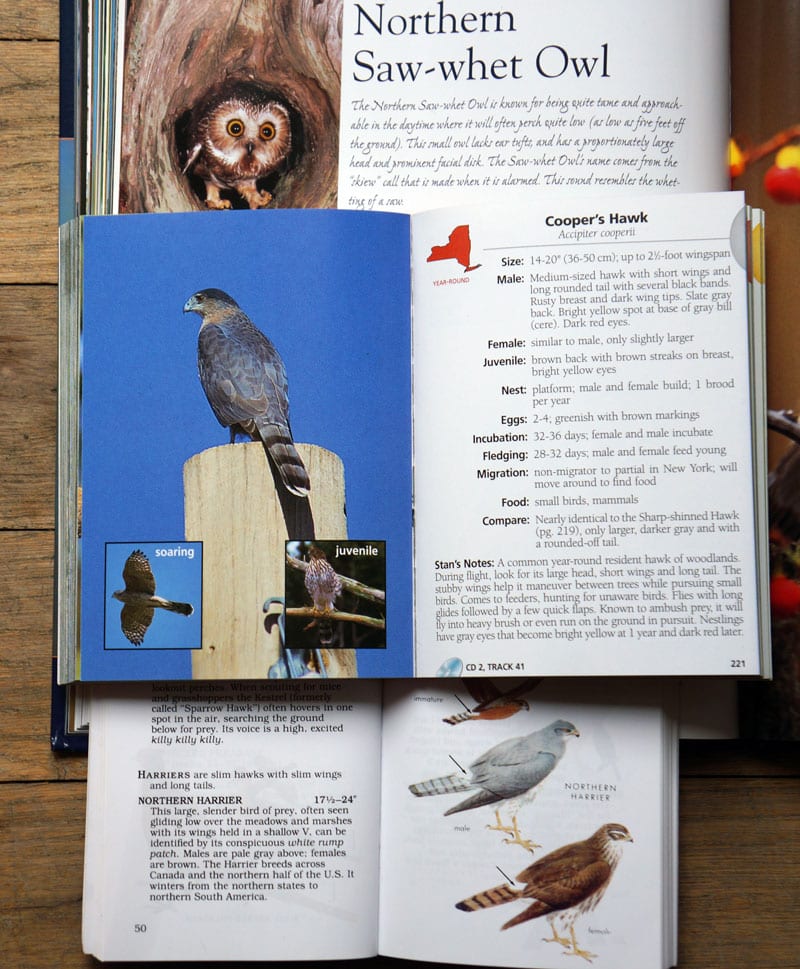 Other birds of prey that appear in the South Fork of Long Island are:
Other birds of prey that appear in the South Fork of Long Island are:
Owls: Snowy Owl (apparently a sudden increase in their numbers this past winter), Long-Eared Owl, Short-eared Owl and the Northern Saw-whet Owl.
Hawks: Northern Harrier, Sharp-shinned Hawk, and Cooper’s Hawk.
Some hawks can be viewed during the Fall migration season (September and October) when they cross Long Island and follow the coastline on their way south. They hunt during the day including targeting migrating song birds.
BIRDS OF PREY RESOURCES
I’m no expert in birds of prey. As I’ve explained above, my kids and I first became fascinated about raptors in the South Fork of Long Island. We’re learning together so rely on experts, books and online resources to help us identify and find out more about these wild things of the sky.
Free SOFO pamphlet
- SOFO – Birds of the South Fork: If you’re in the Hamptons, I highly recommend picking up this free pamphlet from SOFO. It lists all the birds, including raptors, that you might see locally as well as if they’re common or rare sightings and in what seasons. Kids can tick off which they’ve seen.
Field Guides
Small field guide books – some available in SOFO’s store or online through Amazon – to take on a hike, stroll or drive:
Book with local angle
- Exploring the Other Island – a seasonal guide to nature on Long Island by John Turner: Wonderful, easy to read book including chapters on Ospreys and ‘Hawks above the Dunes.’ Make sure you get the most recent updated edition.
Online resources
For much more detailed information on birds of prey, these are some great online resources:
Bird events in the Hamptons
If you’re interested in guided bird walks and talks then check out the event calendar’s for:
- SOFO – different events for all ages
- Eastern Long Island’s Audubon Society.
Injured wildlife
If you find an injured bird of prey (or any wild creature in the Hamptons) then contact the Evelyn Alexander Wildlife Rescue Center of the Hamptons which has a hospital designed exclusively for wild animals. They receive over 10,000 calls a year for assistance or information about injured birds of prey and wildlife found in the eastern end of Long Island.

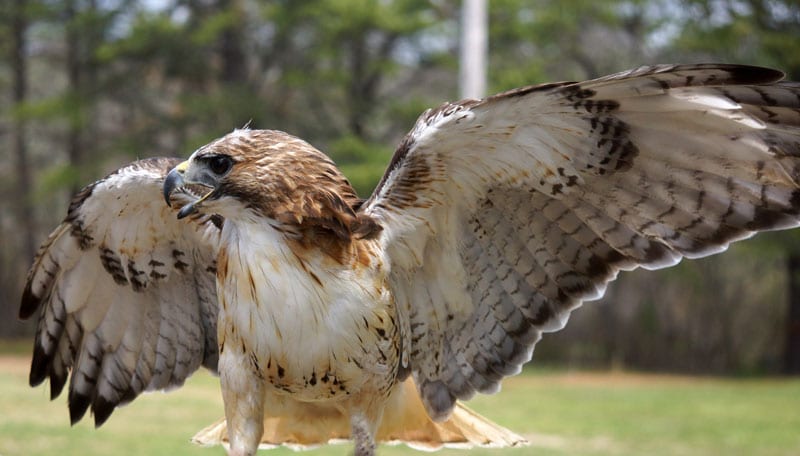
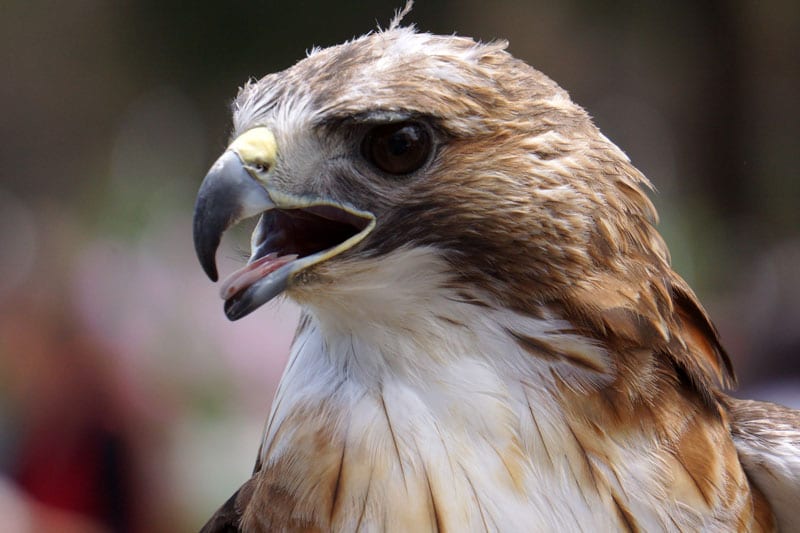
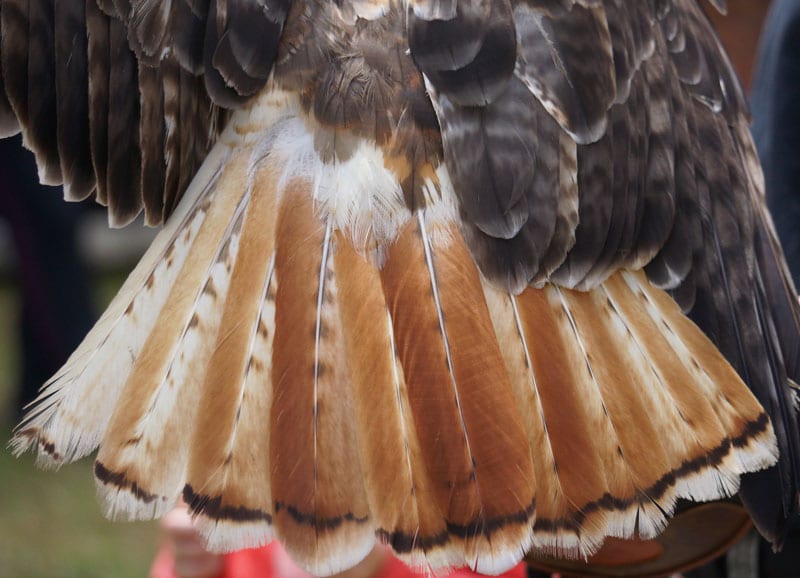
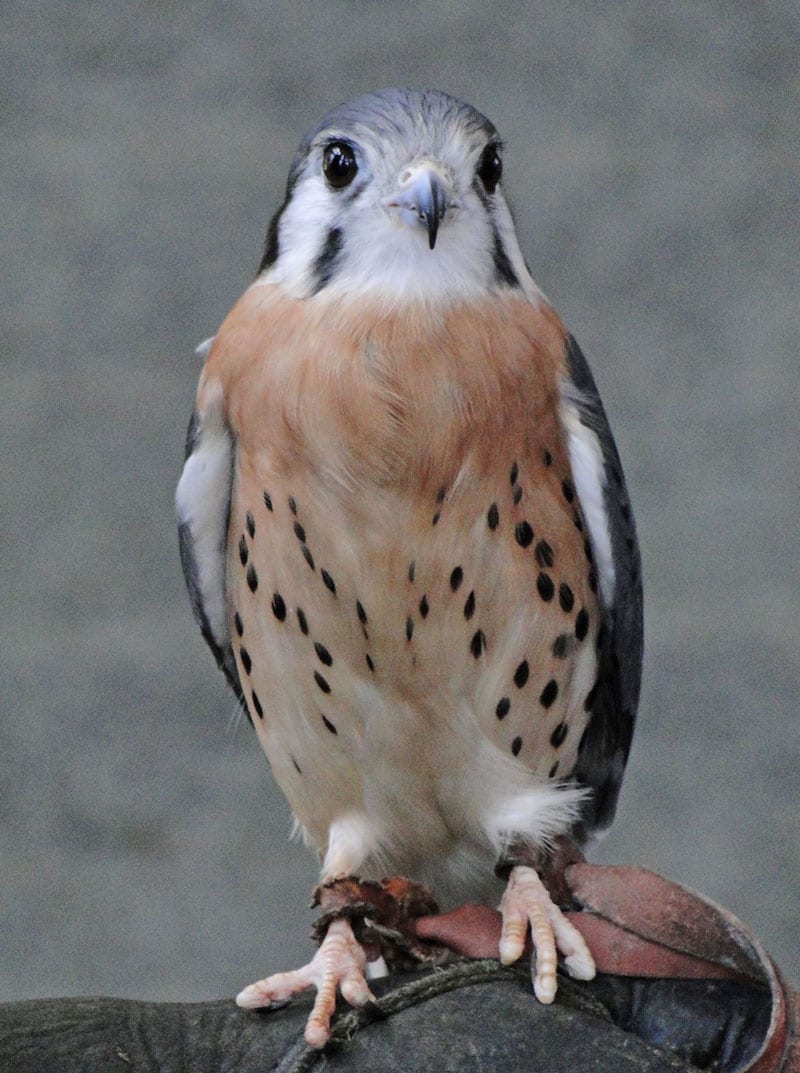
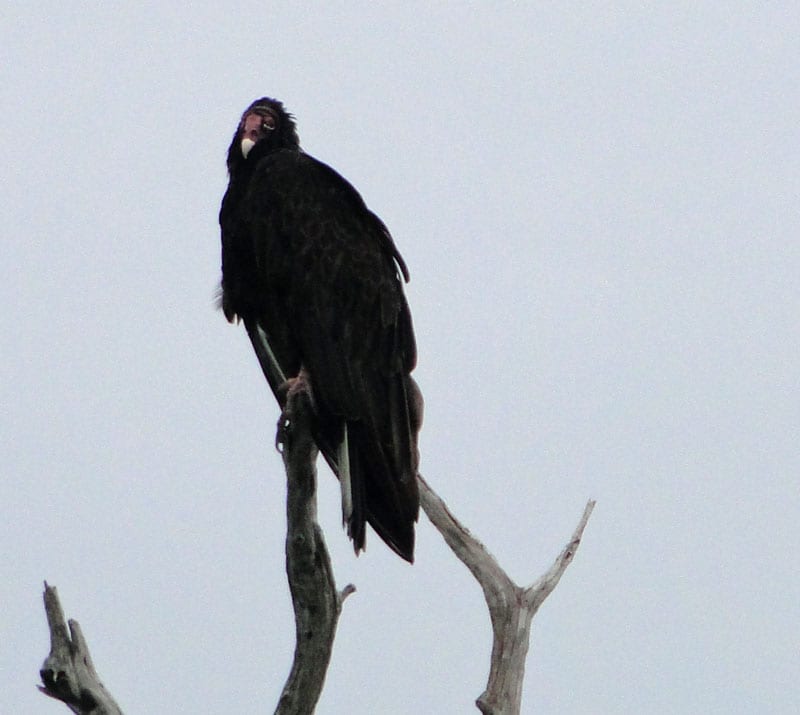

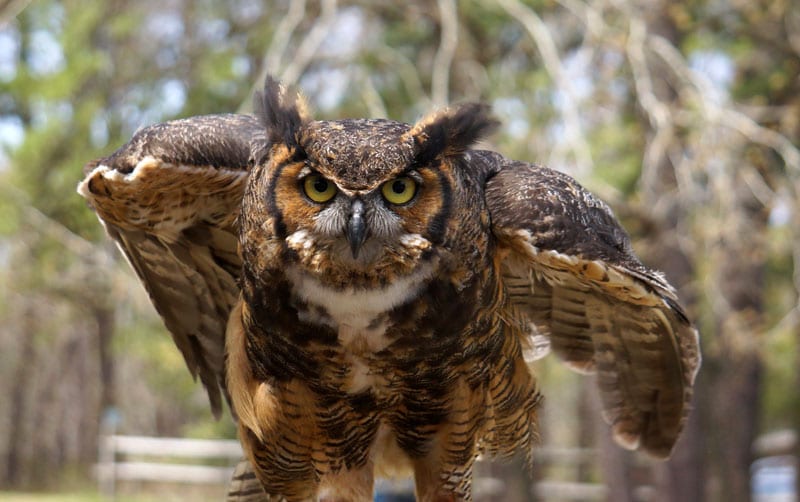
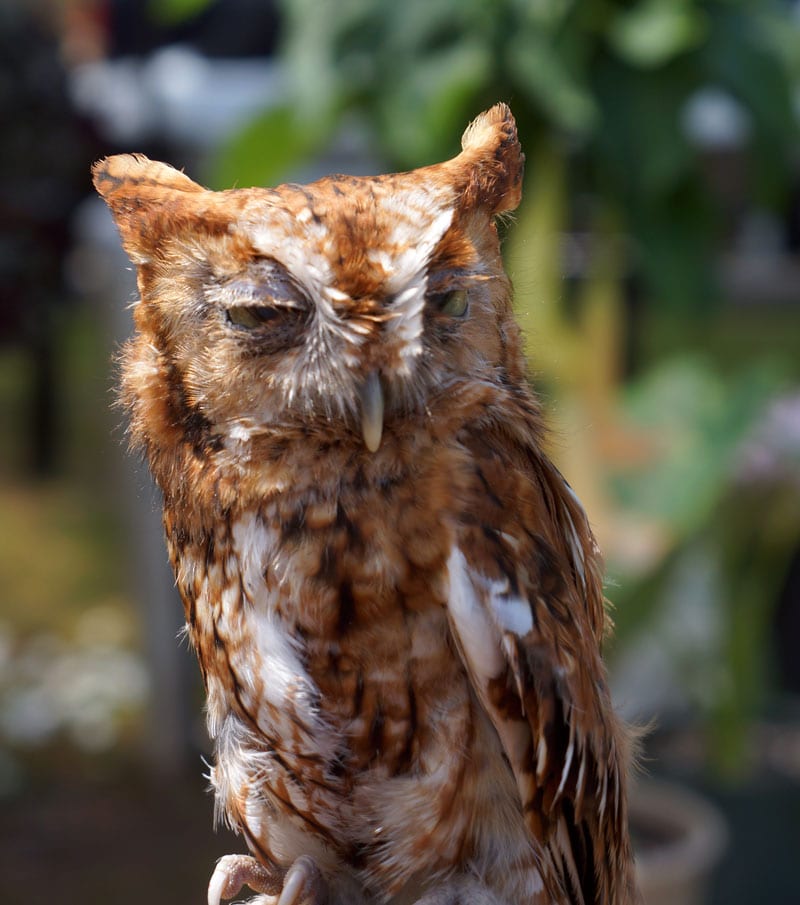
The Mother says- What a great post. I know you read ours and I love that your photos are taken in their habitat. That Red Kestrel is gorgeous. In Buckinghamshire, we have a lot of Red Kites and they are stunning. They fly really low over the area and Lucas loves watching them. #animaltales
Wow, so many different birds of prey, I’m jealous! In Normandy our most commonly seen raptors are buzzards, kestrels and barn owls although from time to tome we see others and I was lucky enough to spot a hen harrier recently. No ospreys or vultures though.
Thanks for linking up to #AnimalTales with such a great post and brilliant pictures
Stunning photos! I always get the shakes when I see birds of prey so have lots of blurred pictures of them. I just tell people they were flying fast….!
We get wild kestrels near us and our Western Australian ones look surprisingly similar.
Pingback: One smart crow - Over there to Here
I’ve heard lots and lots about the Hamptons and these photos really do it justice. The birds are beautiful and your photos are stunning. thank you so much for linking to PoCoLo 🙂 x
What stunning photographs Kriss and what a brilliant thing to do with your children! Such an informative post.
Whoa they look so majestic! My fave ever is an Eagle. We have big ones in my country and I love their royalty aura. Lovely post #PoCoLo
How fantastic!! Stunning birds and brilliant photos 🙂 #alphabetphoto
Oh my goodness Kriss what a great post Kriss. Incredible photos and wise words too. Amazing! Thank you for sharing with #alphabetphoto
Thank you Charly. They are amazing birds.
Stunning birds, gorgeous photos AND what a useful guide Kriss! Great post x
Thank you Sarah – it’s been great teaching and learning with the kids about these beautiful birds
What beautiful birds! We have a lot of Red Kites here but nothing to compare with you.
I bet its beautiful though watching the red kites!
Amazing creatures. So great that you can get up close and personal with them! #alphabetphoto
It is very special seeing so many birds of prey
Oh wow Kriss those photos are amazing! and that American Kestrel is so pretty. One of my first purchases here in Canada was a bird book so I could identify all the new ones I don’t recognise.
We gets lots of turkey vultures here and they can be seen most days in the warmer months gliding on the thermals by the lakeshore., I love watching them 🙂
Same here – we started buying bird books after seeing so many wild birds. How beautiful watching the raptors gliding in the thermals above the lake!
There are few things more stunning than birds of prey – very informative and some great captures!
They are amazing birds – it’s only since we’ve lived here that I’ve started to learn about them.